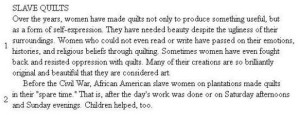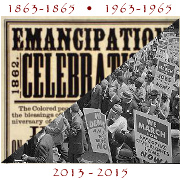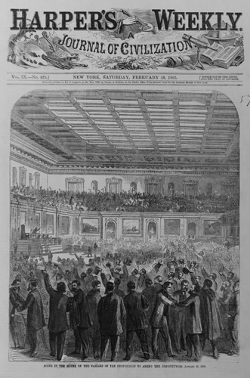Historical myths and coded slave quilts on the Underground Railroad
Posted March 29th, 2013 by James DeWolf PerryCategory: Public History Tags: American South, Northern emancipation, Northern slavery, Slave quilts, U.S. Civil War, Underground Railroad
 Historian Paul Finkelman writes at The Root about the discovery of a sixth-grade reading comprehension test, online from the Massachusetts Department of Education, which reiterates the old myth that coded quilts were used to warn runaway slaves along the Underground Railroad.
Historian Paul Finkelman writes at The Root about the discovery of a sixth-grade reading comprehension test, online from the Massachusetts Department of Education, which reiterates the old myth that coded quilts were used to warn runaway slaves along the Underground Railroad.
This old legend, about coded messages in quilts which told escaped slaves of safe houses and routes to freedom, is common in the United States. Historians agree, however, that there is no truth to these detailed assertions; as Finkelman puts it, this myth has long been known to be “totally fabricated.” Nevertheless, the story of coded slave quilts has frequently been written about as truth, and the story often appears in the interpretation of slavery for the public at historic sites.
This is an appealing myth for many Americans, blending as it does the horrors of slavery with the bravery of the enslaved, who are seeking their own freedom; in some versions of the story, the quilts are even made and displayed by progressive white southerners, doing their part to fight the injustice of their society.
At the Tracing Center, we believe strongly in the importance of separating truth from fiction in conveying the history of slavery to the general public. Myths like that of the slave quilt never contribute to a better understanding of this history or its legacy today, and often exist precisely because they serve to obscure historical realities that would otherwise challenge comforting notions that keep us from deeper understanding of our heritage and its consequences.



 I’m one of the jaded ones now.
I’m one of the jaded ones now.